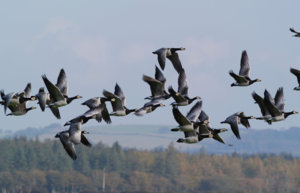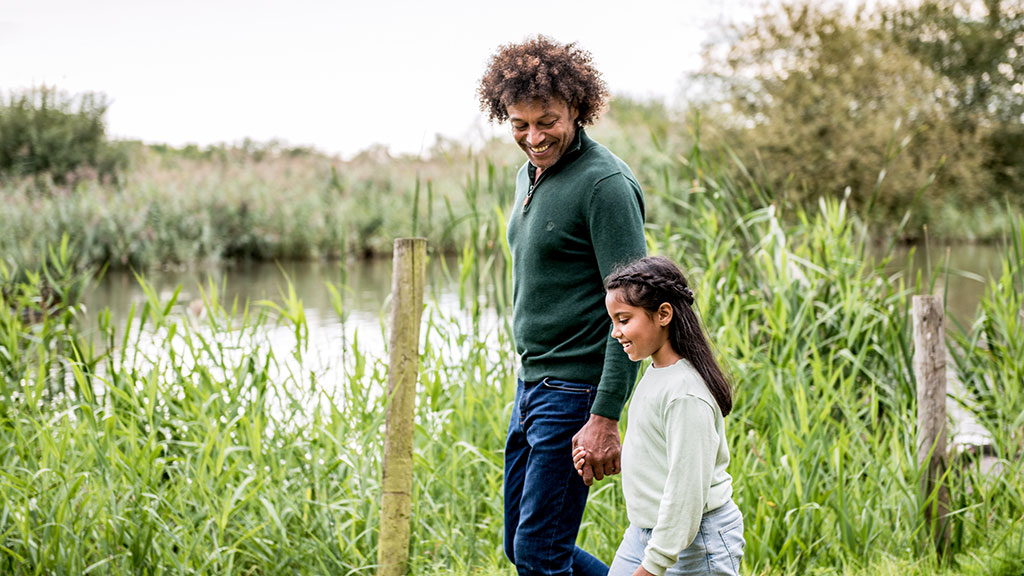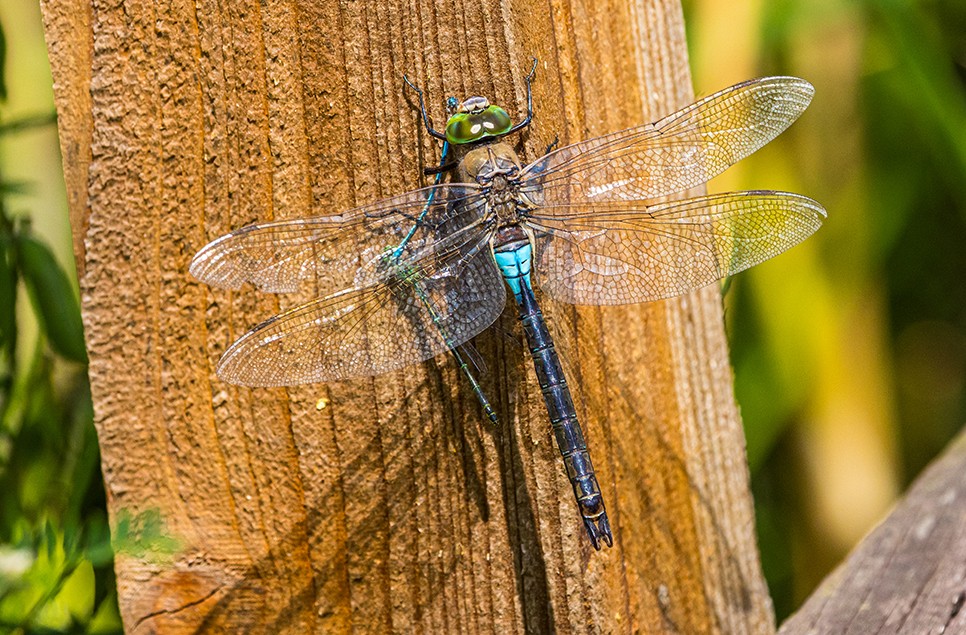Barnacle geese tracking data to help steer windfarm locations
Barnacle geese heading to Svalbard for the summer have been tagged with satellite trackers to find out more about their migration. WWT has fitted five birds with the electronic backpacks which will provide data to help steer the locations of windfarm turbines off the UK coast.
WWT supports the expansion of renewable energy to meet government targets to reduce greenhouse gas emissions and sees wind energy as an important component of this. Where there are potential risks to wetland species, such as migrating birds, WWT works to provide the best data on risks and identify solutions so that birds and windfarms can coexist.
Barnacle goose recovery
The Svalbard barnacle goose, which overwinters in the Solway Firth, numbered just 300 by the 1940s but the population has recovered to some 30,000 today. A ban on hunting the birds and conservation efforts by WWT and colleagues in the UK and Norway were instrumental in their recovery.
New challenges
But in our changing world new challenges crop up all the time. WWT is ensuring that the best information is available on the birds’ migration routes and heights relative to areas of planned offshore wind farm development in the Firth of Forth and elsewhere. Dr Larry Griffin, WWT principal research officer, has tagged 25 geese in the past with GPS tags and tracked their spring migrations over four years.
The bird's main flight corridor seems to take them through sites earmarked for new turbines as part of the UK's planned expansion in offshore wind power. The concern in this particular case is that the geese arrive in the area in the hours of darkness and are flying through in low light or resting on the sea for a few hours. WWT is waiting to see this data on what exactly the geese do in the area before making any judgements.
Getting the best information
Dr Griffin therefore has tagged a further five adult male geese, thanks to funding from the Solway Coast Area of Outstanding Natural Beauty Sustainable Development Fund, this year on their wintering grounds at WWT’s Caerlaverock Wetland Centre on the Solway Firth before they head off this month to the High Arctic Norwegian archipelago of Svalbard. He is hoping to fill in gaps in his data to find out the altitude the birds are flying at and whether they spend time resting on the sea.
This involves using improved solar-powered GPS which may store enough battery power to track the geese at night. By tracking the birds online during their migration, he also hopes to see how they cope with existing wind farms they encounter on the Norwegian coast.
"If they are flying through there in the darkness or in sea fog conditions, my concern is that the potential for collision could be increased," he said.
"It may well be that they spot these things easily and use them as a navigational marker, but the time of day at which they are going through that area concerns me, especially as they have quite a narrow route."
The data gathered from the barnacle geese could be used to help steer where turbines installed under "Round 3" of the Crown Estate licensing process for new wind farms in UK waters are placed. And for those farms potentially being developed in Scottish territorial waters, where the sites are more fixed, mitigation measures might be put in place.




